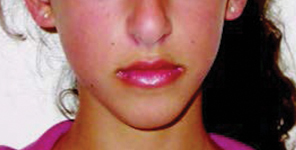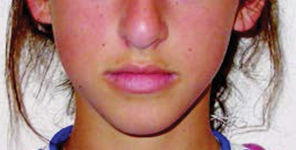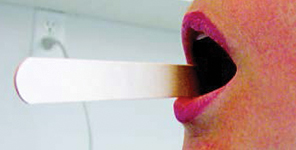Changes in Saliva

Saliva has multiple purposes and its enzymes provide the beginning of the digestive system. Too little saliva affects chewing, swallowing, teeth and gums health, speech, sleep breathing and digestion. Drooling could indicate too much saliva production, which is socially difficult to manage and causes facial skin rashes. Salivary output and quality depends on chewing, medications, stress, neurological disorders, traumas, or mouth breathing.
OMT
HELPS

Changes in the quantity (assessed with a tongue depressor, see image) and quality of saliva may require medical interventions, depending on the cause of the change. However, OM therapists are able to identify hyper- or hypo-salivation and address it in a multi- disciplinary manner. Moreover, better chewing skills may be taught, along with other strategies to optimize salivation.
IF NOT
TREATED

Drooling in children is distressing for parents and caregivers. Chronic reduction of saliva (often called xerostomia) or changes in its quality impact teeth and gum health, digestion, and creates bad breath. Xerostomia also impacts sleep by reducing the surfactant properties of the oropharyngeal mucosa of soft palate and pharynx.

21. Changes in Quantity and Quality of Saliva
–Navazesh M. How can oral health providers determine if patients have dry mouth? Journal of American Dental Association. 2003. May 134:613-20.
–Silvestre-Rangil J, Silvestre FJ, Puente-Sandoval A, Requeni-Bernal J, Simo-Ruiz JM.
Clinical-therapeutic management of drooling: Review and update. Med Oral Patol Oral Cir Bucal. 2011 Sep 1;16 (6):e763-6.